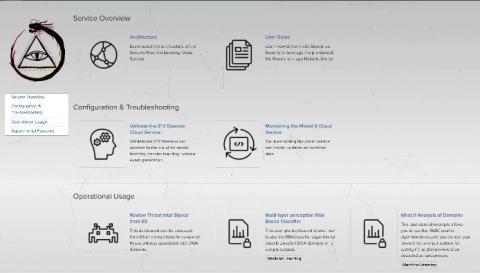Security | Threat Detection | Cyberattacks | DevSecOps | Compliance
%term
Veracode Makes DevSecOps a Seamless Experience With GitHub Code Scanning
Developers face a bevy of roadblocks in their race to meet tight deadlines, which means they often pull from risky open source libraries and prioritize security flaws on the fly. In a recent ESG survey report, Modern Application Development Security, we saw that 54% of organizations push vulnerable code just to meet critical deadlines, and while they plan for remediation on a later release, lingering flaws only add to risky security debt.
Securing Cloud Environments: Staying on top of cloud configurations to prevent data leaks.
30 Ransomware Prevention Tips
Dealing with the aftermath of ransomware attacks is like Russian roulette. Submitting the ransom might seem like it’s the sole option for recovering locked data. But paying the ransom doesn’t mean that your organization will get its affected data back. Let’s not forget that ransomware also continues to evolve as a threat category.
Zerologon: Tripwire Industrial Visibility Threat Definition Update Released
Today, we released a Threat Definition Update bundle for our Tripwire Industrial Visibility solution to aid in the detection of Zerologon. Otherwise known as CVE-2020-1472, Zerologon made news in the summer of 2020 when it received a CVSSv3 score of 10—the most critical rating of severity. Zerologon is a vulnerability that affects the cryptographic authentication mechanism used by the Microsoft Windows Netlogon Remote Protocol (MS-NRPC), a core authentication component of Active Directory.
File Integrity Monitoring (FIM): Your Friendly Network Detective Control
Lateral movement is one of the most consequential types of network activity for which organizations need to be on the lookout. After arriving at the network, the attacker keeps ongoing access by essentially stirring through the compromised environment and obtaining increased privileges (known as “escalation of privileges”) using various tools and techniques. Attackers then use those privileges to move deeper into a network in search of treasured data and other value-based assets.
Gaining holistic visibility with Elastic Security
Let’s talk visibility for a moment. Security visibility is a data-at-scale problem. Searching, analyzing, and processing across all your relevant data at speed is critical to the success of your team’s ability to stop threats at scale. Elastic Security can help you drive holistic visibility for your security team, and operationalize that visibility to solve SIEM use cases, strengthen your threat hunting practice with machine learning and automated detection, and more.
SIEM Alerts Best Practices
Security Information and Event Management (SIEM) tools play a vital role in helping your organization in discovering threats and analyzing security incidents. Logsign’s internal team continuously makes correlation rules and alerts so that your team’s workload is minimized. In our previous posts, we discussed generating important reports and deriving maximum possible benefits from use cases. In this article, we will be discussing SIEM alerts best practices.
Announcing Polaris support for GitHub Actions
Security and development teams are increasingly adopting DevOps methodologies. However, traditional security tools bolted onto the development process often cause friction, decrease velocity, and require time-consuming manual processes. Manual tools and legacy AppSec approaches limit security teams’ ability to deliver the timely and actionable security feedback needed to drive improvements at the pace of modern development.
Detect Ransomware in Your Data with the Machine Learning Cloud Service
While working with customers over the years, I've noticed a pattern with questions they have around operationalizing machine learning: “How can I use Machine Learning (ML) for threat detection with my data?”, “What are the best practices around model re-training and updates?”, and “Am I going to need to hire a data scientist to support this workflow in my security operations center (SOC)?” Well, we are excited to announce that the SplunkWorks team launched a new add-









